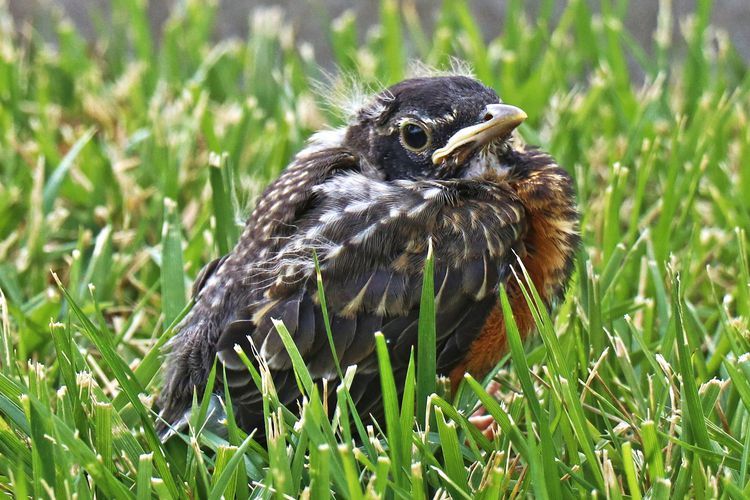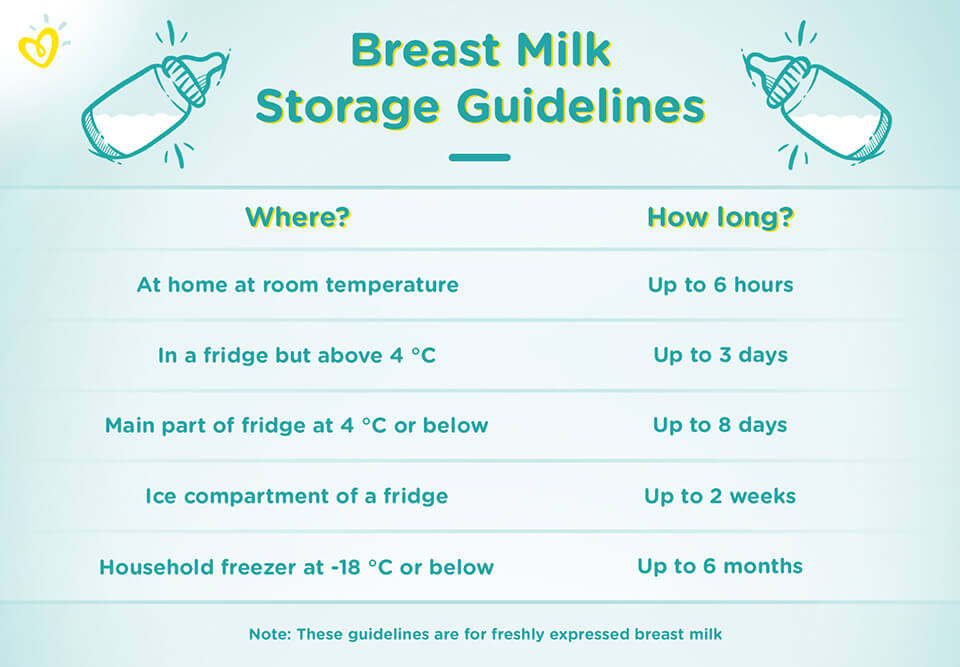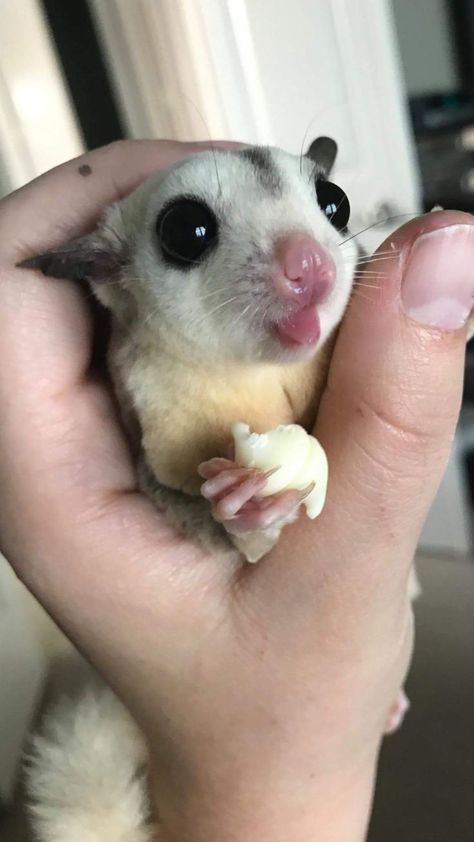What do you feed a baby robin
What Do Baby Robins Eat? and How to Feed One! a How-To Guide
Either you found a baby robin that’s fallen from its nest, or perhaps you’re just curious and asking what do baby robins eat?
Well, here’s the guide on what baby robins eat, and if the need arises then how to feed one. So first let’s give you the quick answers, then we’ll get into more details…
How do baby robins eat? During the first week, the parents regurgitate partly digested food into the baby’s mouth. As they grow they eat a variety of food from earthworms, to whole worms and large insects, and even berries until they fledge to finally fend for themselves.
How do you feed a baby Robin? To feed a baby robin you can use a dropper, clean hands, or let the babies feed themselves when they become independent enough. Once released they will naturally be able to hunt for food and feed themselves.
Ranger Planet
Please enable JavaScript
Ranger Planet
Read on, or watch the video below from the Ranger Planet Youtube Channel.
What do baby robins eat and when
Baby robins are just that – babies, at first, and depend wholly on their parents for food.
However, what baby robins eat during the very first few days and onward changes as time goes by – and fairly quickly too.
Here’s the list of what baby robins eat at each growth stage. But if you’re looking to protect your baby robin, then be sure to check what eats robins to know what might want to prey on them. You might also be interested to know if it’s legal to keep a robin as a pet?
1 – 7 Days – baby robins eat…
When baby robins are with their parents, the parent robins forage for food for themselves, but also gather enough to feed their young.
The parent regurgitates this partly digested food into the baby’s mouth. This is the only way that baby robins eat and are fed during the first week from birth.
This includes partly digested insects, beetles, worms, berries, and seeds
7-14 days – baby robins eat…
Around this time, the parents pass larger portions of food or break up larger ones such as earthworms and deliver into the baby robin’s mouth.
From here onwards the baby robins start eating more with each passing day.
Whole versions of insects, beetles, worms, berries and seeds.
After a period of this, the parents begin to let the baby robins eat the whole worm and other large insects on their own.
By this time a baby robin will be able to eat the equivalent of 14 feet of earthworms during its two-week nest life.
14 days plus – baby robins eat…
From this point, more often than not baby robins are able to eat food provided to them by the parents that are just placed in the nest. The baby robin is old enough to find and eat the food themselves within the nest.
In general, baby robins depend on the parents fully for their daily dose of food, until they are independent enough and can fledge the nest and fly away.
On average, the parent robins can make up to 100 visits a day to feed their young ones – that just shows how often the baby robins eat to grow up.
This is also why robins are very picky in choosing a territory to create their nest.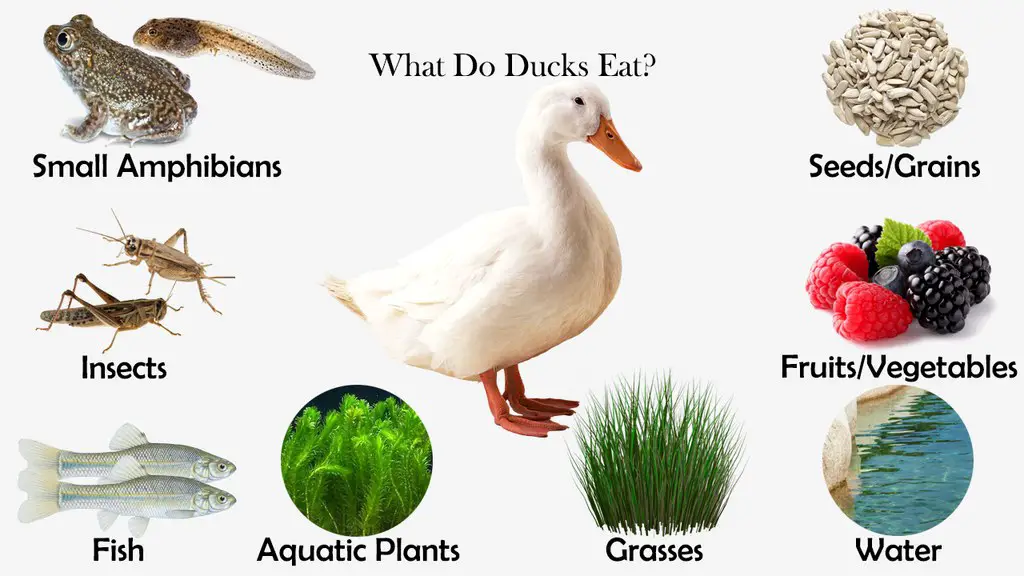 They need to ensure they live close to adequate food sources to make the hunt for food and feeding visits often and easy.chicks in a nest
They need to ensure they live close to adequate food sources to make the hunt for food and feeding visits often and easy.chicks in a nest
You might also like:
Do robins make good pets
Why do robins hop
Do birds have ears
Do birds have teeth
So let’s move on to how you would feed a baby robin.
How to feed a baby robin?
If you’re in the situation where you have a baby robin you need to take care of and hand rear, perhaps one that fell from the nest or lost its parents. Then naturally, there are plenty of things you will have to know about feeding baby robins – let us give you some guidance.
There are, thankfully, many ways and methods that have worked to feed baby robins, below are three safe methods to feed a baby robin.
1. Using a syringe to feed a baby robin
You can use a syringe, like this one, or an eyedropper to feed baby robins.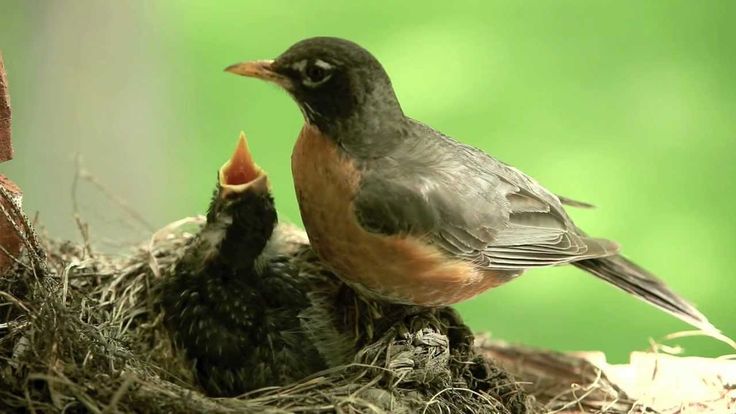 For this method, the best food would be to get a baby bird formula mix.
For this method, the best food would be to get a baby bird formula mix.
With this formula, use the syringe and simply follow the instructions for feeding.
Alternatives to baby bird formula
Instead of a bird formula mix, you could even use baby formula or wheat cereal like farina. Or at a push, you might be able to soak dried dog food which has been known to feed baby robins quite well.
However, when feeding these products be sure to still use the syringe or dropper. Try to make sure the products are mushed down enough to pass through the dropper without getting blocked.
At first, one or two full droppers will almost certainly fill the baby robin, but as they grow they’ll likely need more of it – and potentially more often. Being a robin parent is a demanding job!
The baby robin will let you know when it’s full, usually when it’s hungry or wants more food it opens its mouth automatically.
Be aware of this too, do not try to feed the robin when it is not asking, as you can easily overfeed them, which is just as risky as not feeding them.
So it’s important to observe if the bird is full or not before trying to encourage them to eat further.
2. Using your hands to feed a baby robin
Hands can also be used to feed baby robins. Moistened duck or chicken feed that are processed well with an even texture can also make some good reasonable food baby robin food.
When using the hands it’s important to be hygienic. Not only when feeding but also while making the food using the hands or when handling the bird.
To feed a baby robin using your hands, take a tiny pinch of food and stick it to the tip of the finger and all you have to do is touch the corner of the bird’s mouth.
The baby robins will automatically open their mouth and you shouldn’t have any trouble passing it into their beaks.
Another great thing about using hands to feed baby robins is that you will get a good sense of when to stop because the baby robin will stop opening their mouth when they feel full, unlike droppers which can be inserted into the mouth anyway – even if the bird is already full.
3. Allow the baby robin to feed on its own
If you get to this point then congratulations, or if the bird already has some plumage and appears to be an older chick.
This method works mostly when the baby robin is a little more grown-up and can handle the food on their own.
This is a method that allows the baby robins to feed themselves by placing the food on the ground next to them.
For this, offering small berries, or using mealworms, earthworms, or grubs near the ground next to where they rest will work fine.
This will also allow the birds to come and feed whenever they feel hungry. On average baby, robins may have to be fed every 5-10 minutes at peak times.
When feeding baby robins, make sure that…
- The food is at room temperature. Even if the food is refrigerated, it’s important to make sure the food is at room temperature when feeding the baby robins.
- Make sure the food is not spoilt, has no fungus or bacteria when feeding.
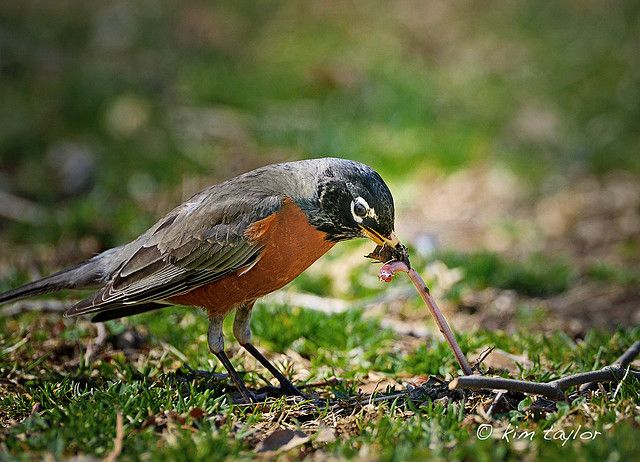
- The food should have a fine texture and even toward slushy, but smooth enough to get through the delicate throats of baby robins.
- Up to three weeks old, the baby robins will be grown up enough to find their food. So by this time, it’s good to allow the baby robins to eat of its own accord and just make sure food is available.
Then one day, they will fledge and fly away. And you can smile in the knowledge you probably just saved a wild bird’s life. If the baby robin does not survive, then it was never meant to be, and at least you provided it with some comfort and the best chance of survival.
So finally…
We hope this has been useful in answering the question – what do baby robins eat? And hope you’ve been able to put the help on how to feed one to good use.
Tweet
What Do Baby Robins Eat?
As an Amazon Associate I earn from qualifying purchases.
A New Born Robin Bird Being Fed By Its ParentIt’s a widespread misunderstanding that a mother or father robin solely provides her young with worm larvae. A baby robin’s diet is balanced, in fact, with a wide range of foods.
A baby robin’s diet is balanced, in fact, with a wide range of foods.
The first hatchling in a batch is usually seen 12 to 14 days after the mother bird has laid her last egg. Those youngsters make sure their mother and father continue to hop by making them hop.
As a result, if an abandoned nestling robin is left alone before it reaches two weeks old, it will almost certainly die. Robins are distinctive in that they subsist on invertebrates rather than bird food and live off the insect’s grubs or fruits and berries. You may offer baby robins at home until they are prepared to care for themselves and become independent!
So, what do baby robins enjoy eating? Continue reading to learn more.
What Do Baby Robins Eat?Most of the time, people are unaware of what these newborn birds eat. Baby robins consume things like vegetables and fruits, as well as worms, bugs, and grubs in accordance with what their parents bring them. They eat a balanced diet consisting of both worms and other food before their nest life expires at 14 days old.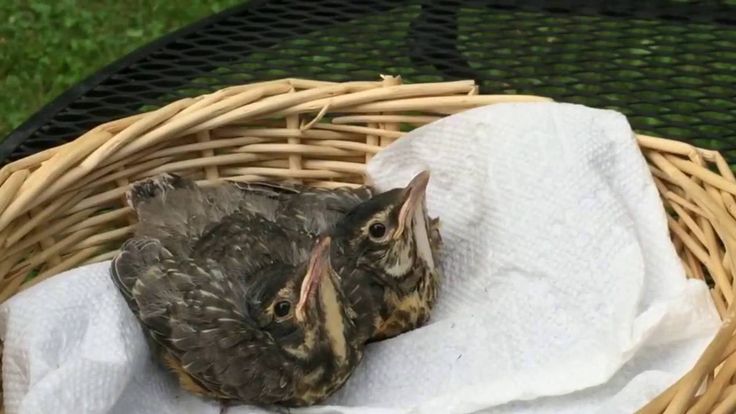
When with their parents, robins consume worms. Earthworms or mealworms may be gathered for robin birds to consume. Worms are a good source of nutrition for birds. Birds go out in search of food for their nestlings on a regular basis. In order to obtain food for their young, the mother robin does the same thing.
If you’re in doubt about how to care for a Robin, just wait until the next day. When you return home after being gone for multiple days, make sure your baby Robin isn’t alone and not crying or displaying unusual behavior. It’s important to remember that feeding a robin bird may be tough since you can’t offer them as you do
Insects InsectsOne of the greatest foods to offer baby robins is insects. Robins eat a variety of tiny invertebrates, such as grasshoppers and beetles. Following half-digestion, nestlings are fed food by their parents, particularly their mother. Have you ever saved a robin? You can offer them crickets, as they do with robins.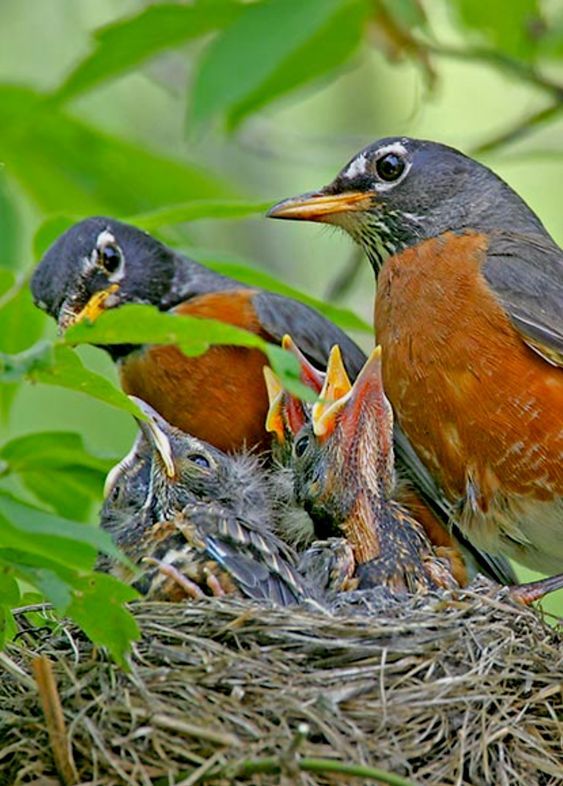 Robins feed their fledglings insects like grasshoppers, crickets, and beetles.
Robins feed their fledglings insects like grasshoppers, crickets, and beetles.
Fruits like blackberries, blueberries, strawberries, and grapes are all on the menu of a wild bluebird’s favorite foods.
How To Feed a Baby Robin?The robin may be a beneficial pest control measure in many areas, especially if the population of ground squirrels is growing. In other situations, a deadly conflict between a pair of robins can occur. There are times when a nestling falls from its nest and becomes injured or killed. Have you come upon a newborn Robin out in the wild and don’t know what to feed it? If you need to feed a baby Robin, there are various methods for doing so. Here are some options for feeding a young robin:
Use Your Own HandsThe feeding of a newborn Robin is very simple; all you have to do is provide the baby with food. It’s necessary to clean your hands before feeding a baby robin since using gloves may irritate the bird. Once the baby Robin sees the feed in your hands, it will open its mouth.
Once the baby Robin sees the feed in your hands, it will open its mouth.
It’s critical to be careful about hygiene when feeding a Robin. You can simply tell if a robin is full or not while feeding it with your hands. Baby Robins will be able to feed themselves after two weeks if they are fed on a daily basis. Before they can go out and forage for themselves, the parents must first feed their newborn Robin.
Use A Bird DropperA bird dropper is a great alternative to hand-feeding a robin. I believe that a dropper is an excellent tool/equipment to have. The food will be caught in the droppers, allowing the bird to eat using its beak.
Allow It To Feed ItselfAnother approach to feed a Robin is for it to eat on its own, but you must prepare food like berries, earthworms, or chicken food since they are still young. Once the youngster reaches puberty, it will be able to feed itself with sustenance provided by humans.
Robins can survive even if their parents aren’t there, but it might be tough if they haven’t grown up a week. Feeding may be simple with the aid of a person or a parent. All you have to do to feed the Robins is lay the food on the ground so that they may eat it on their own.
Feeding may be simple with the aid of a person or a parent. All you have to do to feed the Robins is lay the food on the ground so that they may eat it on their own.
They can’t even attempt to leave the nest for at least another week, so they have to make do with whatever their parents provide.
When baby robins begin eating solid foods, their parents will offer them larger pieces of the same meals they’ve been feeding them in regurgitated form–earthworms, mealworms, full-size insects like grasshoppers, crickets, and beetles, as well as berries and seeds.
Baby robins know that they will need to forage for food for their young, so they build nests in areas where food is plentiful. They are generally known to consume from on earthworms, especially on wet lawns or outfields. However, bird feeders also play a vital role in terms of providing baby robins to chow down on some dinner! While robins rely on eyesight to search for warms and other sources of food, they can also be notified of any nearby earthworm through listening to the sounds that come from the ground, according to studies.
However, when they do find them, parents collect a large number of earthworms. And it’s a wonderful thing because, as their young children continue to develop, they will only be eating full-sized quantities of this high-protein food for days. As a matter of fact, during these two weeks, baby robins sleep in the nest with their parents and ingest the same amount of earthworms as they would during 14 feet of soil!
How Much Do Baby Robins Eat? A European Baby Robin BirdThe parent robins feed their baby robins hand-feeding mix, cockatiel, parrot, earthworms, and fruit and berries. The parent robins are constantly seeking food to feed their infants at all times of the day.
The nest of a pair of parents is tiny, and the parents must make trips to the nests of other birds about every 10 minutes. During a day, they may fly as many as 100-150 times back and forth between their nest and that of another bird. Of course, their time during those first few weeks is entirely focused on providing food for
When baby robins are born, their eyes aren’t open. They also emerge from their eggs without any feathers. The ears of nestlings won’t open until approximately day five, but they will soon learn to identify their parents by the lively songs. It’s also important for them to know when their parents are approaching. When they feel the bounce on the edge of the nest or a shadow pass over them on a sunny day, it indicates that their food has arrived and that they should raise their heads and open wide to be fed.
They also emerge from their eggs without any feathers. The ears of nestlings won’t open until approximately day five, but they will soon learn to identify their parents by the lively songs. It’s also important for them to know when their parents are approaching. When they feel the bounce on the edge of the nest or a shadow pass over them on a sunny day, it indicates that their food has arrived and that they should raise their heads and open wide to be fed.
As a result, a baby robin should be fed at least every half hour from sunrise to sunset. Perhaps once a day, you may take a 2-3 hour siesta.
What Are The Natural Predators of Baby Robins?The American robin is an omnivorous species. They are primarily insect and worm eaters, although they may also consume small snakes and other little reptiles and amphibians. They also eat fruit and berries. The robins have been known to plant the seeds of these berries in new locations by defecating with them.
Shrikes, eagles, foxes, bobcats, and hawks all eat robin eggs.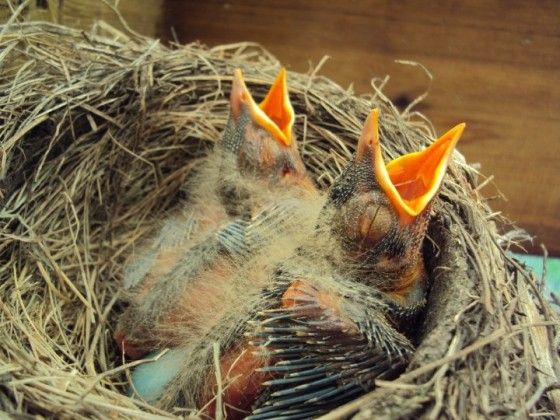 At the same time, blue jays and crows are known to feed on their eggs and consume them young. All of these animals are typical predators in their environments. Cats, which are not natural predators since they are fed and maintained by people, kill in exceptionally high quantities of robins because cats mostly pursue animals that robins do their feeding on the ground.
At the same time, blue jays and crows are known to feed on their eggs and consume them young. All of these animals are typical predators in their environments. Cats, which are not natural predators since they are fed and maintained by people, kill in exceptionally high quantities of robins because cats mostly pursue animals that robins do their feeding on the ground.
The robin is preyed on by a variety of birds, some of which are natural predators and others of which are his natural friends. Jays and crows are known to attack young robins during the nesting season, but they can also warn them of even bigger dangers and, on rare occasions, drive away hawks and owls.
Other birds that compete for food may be considered foes by robins, such as mockingbirds, waxwings, and other fruit-eaters. These birds are frequently chased away. Humans who leave their cats outside and/or use lawn pesticides pose the greatest threats to robins and especially their newly hatched babies.
How To Protect Baby Robins From Predators?Nesting locations of all types can be vulnerable to attacks from predators, such as Blue Jays, crows, grackles, and a variety of other species. If the nest is in a natural area like a tree, there isn’t much that anybody can do to safeguard it.
If the nest is in a natural area like a tree, there isn’t much that anybody can do to safeguard it.
Baffles might be utilized to protect the nest from climbing predators in certain situations. To keep predators away, don’t leave food outside. Keeping pets inside, especially during the nesting season, may save millions of birds every year.
How Long Does it Take For Baby Robins to Get Redbreasts?The juvenile robins do not receive their redbreasts until the late summer months, usually when they are between 2 and 3 months old. This happens since a part molt implies that they shed their speckled feathers.
However, while still in the shell, they have the same round form, lengthy legs, and head postures as their adult counterparts. This is why many people are unsure if all robins have red breasts.
Redbreasts are deliberately prevented from developing in robins to prevent internecine warfare with other robins. In some populations, territorial confrontations cause up to ten percent of adult robins’ deaths.
Amazon and the Amazon logo are trademarks of Amazon.com, Inc, or its affiliates.
description of the bird, characteristics and habitat, species
The robin is a small bird of the flycatcher family of the passerine order. It has several names - it is often called a robin, sometimes a dawn or an alder. Malinovka is known for her beautiful voice. Birds live near water bodies in mixed and broad-leaved forests, overgrown parks and gardens. They live in the northwestern part of Africa, on the northern coast of the Mediterranean Sea, in Scandinavia, western Eurasia. The name of the bird was due to its bright sign - an orange speck on the breast. nine0003 Bright color is a feature of the robin
Appearance and behavior of the bird
The bird is 15 cm long and has a short sharp beak, black eyes and thin paws. Young robins are pale in color with white and brown spots. Adults look more bright:
- vertex and dorsum are grey-brown;
- breast and underside are orange;
- belly - light grey.

Large black eyes allow birds to navigate through dense vegetation. Females and males do not visually differ from each other. Individuals living in the southern regions have a more saturated plumage color. nine0003
Scientists say that robins living in warm countries are less mobile than those living in cold regions.
Bird activity peaks in the morning and before bedtime, but there are exceptions.
You can hear the singing of robins in the spring, when their mating season begins. Unlike nightingales, in which only the male sings, in robins, both the male and the female participate in the trills. The male individual by singing notifies competitors that the territory is occupied, the female one reports that she is looking for a mate. nine0003
FUN FACT . The robin is one of the first to sing, just before sunrise. Birds also actively sing at sunset, and sometimes at night.
On the video you can listen to the wonderful singing of the robin.
There are more male robins in nature than females, so not everyone manages to find a mate. Males that have not found a partner do not guard their territory. In addition, single males gather in flocks and live in groups until they start a family.
A male robin that has a pair behaves much more aggressively towards other males and even other types of small birds. The male without much thought attacks the stranger. In such civil strife, about 10% of robins die.
Robins live for about 2-3 years. In captivity or under favorable weather conditions, birds live up to 10 years. Their numbers are negatively affected by cold winters and a reduction in the volume of food supply.
INTERESTING FACT. Robins living in England and Ireland are not at all afraid of people, since no one touches them. Birds can easily be approached at close range. nine0003 A robin sits on a branch with berries
Robins love water treatments. In the mornings, on the banks of reservoirs, you can see flocks of birds splashing in the water with pleasure. If there is no pond or river nearby, the birds use drops of morning dew to bathe.
If there is no pond or river nearby, the birds use drops of morning dew to bathe.
To clean their feathers from parasites, robins fly to the anthill and bathe in it. After that, they go out into the sun and sunbathe. In winter, birds bathe in the snow.
Migratory or settled
In warm regions, the European Robin does not fly south for the winter. Individuals living in cold climates are migratory. For example, the British robin stays wintering in the same place where it lives. However, some females still fly to Italy and Spain. Birds living in Russia and in the Scandinavian countries fly to Western Europe or the British Isles. In Kazakhstan, part of the robin does not fly away, but remains to winter in the area of the Alakol depression. The European robin prefers to settle in spruce forests, while the British robin prefers to settle in gardens and parks. In the Tobolsk region, nesting robins were found in birch groves with dense undergrowth. Attempts have been made to settle the robin in Australia and North America, but they have not been successful. nine0003
nine0003
Most of the robins migrate from the Leningrad Region to Europe for the winter, but winterings of some individuals have been recorded, especially during warm mild winters. So, for example, there was a case when a robin nailed to a flock of sparrows. People fed the birds with bread crumbs, sunflower seeds, and millet. The robin came down with the sparrows to peck at the food. During severe frosts, the robin ate only what fell on a warm sewer manhole. She also tried to taste the mountain ash, but to no avail - the frozen berries did not succumb to her short beak. nine0003
FUN FACT . Outside the city, robins try to winter near a non-freezing reservoir or stream. Throughout the day, the birds hide in the bushes, but twice a day they appear near the water and spend about an hour there in search of food. Along the shores, birds find dry seeds of herbs and plants.
What is included in the diet of the robin
The diet of robins consists of various insects, worms, fruits and berries. Sometimes she enjoys hunting snails. In the presence of sufficient lighting, robins continue to hunt for insects at night. With the onset of cold weather, the diet of birds becomes poorer. They switch to plant foods: seeds, crumbs, grains. Sometimes robins follow wild boars in search of food in winter, as they know that animals often dig the ground. It may contain seeds or grains. Robins are not afraid of water and in search of food they fly to the shores of non-freezing lakes. nine0003 Robin on the bank of a stream
Sometimes she enjoys hunting snails. In the presence of sufficient lighting, robins continue to hunt for insects at night. With the onset of cold weather, the diet of birds becomes poorer. They switch to plant foods: seeds, crumbs, grains. Sometimes robins follow wild boars in search of food in winter, as they know that animals often dig the ground. It may contain seeds or grains. Robins are not afraid of water and in search of food they fly to the shores of non-freezing lakes. nine0003 Robin on the bank of a stream
During nesting in Russia and CIS countries, the diet of the robin consists of 92% of food of animal origin: eggs of aphids, centipedes, weevils and other arthropods. From food of plant origin, raspberry seeds predominate. In early - mid-autumn, insects make up 87% of the bird's menu, the rest is elderberry, blueberry, weed seeds.
If robins live near the dwelling, in the cold season it is worth helping the birds and feeding them. Feeders can be filled with:
- grated carrots;
- small plant seeds;
- millet groats;
- dried or fresh berries.

Natural enemies
There are many natural enemies of robins - these are owls, falcons. Small predatory animals destroy their nests, eating both eggs and chicks. Also, hungry crows and magpies are not averse to eating eggs. Since robins often run on the ground, here they can become prey for cats. Humans negatively affect the habitat of birds by reducing the area of wild forests. nine0003
Reproduction and offspring
The robin can raise 2 offspring per year. If one of them dies, the birds may lay eggs a third time. The female is looking for a partner. She flies into the territory of the male, which usually behaves aggressively. The female begins to sing, the male answers her with frightening sounds. The female flies away from him, and then returns again. She demonstrates humility, trembles, clings to the ground. In the end, the male, feeling a sense of superiority, accepts her into his territory. nine0003 A robin's nest with offspring
After fertilization, the female starts building a nest out of twigs, grass and dirt.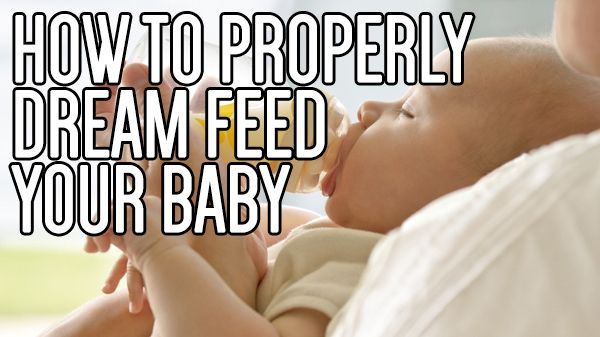 In it, the bird lays 5-6 green-blue eggs. In the second clutch, the number of eggs may be less. One pair of robins usually covers an area of 60-120 m². Sometimes nests of different families are found at a distance of 50 m from each other. Robins are quite conservative and rarely change their habitat. Change of territory is possible in case of ruin of their nests or death of chicks. Then the parents fly away from their usual place and look for a safer nest for the device. nine0003
In it, the bird lays 5-6 green-blue eggs. In the second clutch, the number of eggs may be less. One pair of robins usually covers an area of 60-120 m². Sometimes nests of different families are found at a distance of 50 m from each other. Robins are quite conservative and rarely change their habitat. Change of territory is possible in case of ruin of their nests or death of chicks. Then the parents fly away from their usual place and look for a safer nest for the device. nine0003
Incubation of eggs lasts 2-3 weeks. During this period, the male feeds the female. Both parents take care of the born chicks. Babies are born completely naked. So that they do not freeze, the female sits in the nest for some time and warms them. Parents actively feed their babies for about 16-20 days. Soon the female makes the next clutch.
Chicks show their first attempts to fly three weeks after birth. After a month, they fully fledge and leave the nest.
INTERESTING FACT. Young robins are very curious and fearless.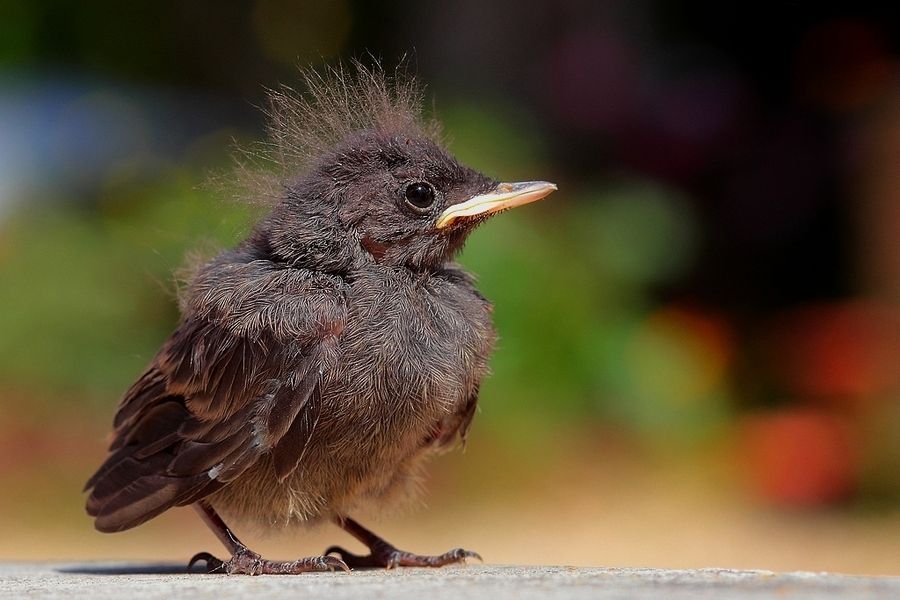 Sometimes they can run after a person.
Sometimes they can run after a person.
There are rare cases of robins capturing the nests of smaller birds along with other people's eggs. For example, a situation was recorded when a pair of robins settled in the nest of a rattlesnake warbler. At first, they incubated their own and others' masonry, but in the end, the parents removed the eggs of the warbler. There were cases when robins could not distinguish other people's eggs from their own, and raised the chicks of other birds. This is actively used by cuckoos. They often lay their eggs on robins. Usually, the cuckoo leaves only 1 egg in one nest, otherwise the caregiver birds will not be able to feed two chicks. In the Zhelezo tract, Leningrad Region, ornithologists observed a robin's nest, where there was a cuckoo. He was younger than the robin chicks, and at first his parents brought him food less often than their chicks. When the cuckoo grew up, the situation changed. The older the foundling became, the more often the robins brought him food. nine0003
nine0003
The activity of caring for the robin's offspring does not depend on the weather: both in rainy and sunny weather, ornithologists observed long and short periods of feeding. During the white nights, the duration of feeding the chicks increased to 19 hours a day. Drizzling rain does not significantly affect bird activity. Only a heavy downpour can become a hindrance.
Unusual robin nests
Robins usually hide their nests under cover, even if they are close to the ground. In villages or city limits, robins may build a nest near human habitation, for example, on the roof of a house or barn. There was a case when a robin's nest was found, which was arranged on an old bag and a coil of wire hanging on the wall of an abandoned house. Ornithologists were surprised that the "house" was in the open. It had a solid base of dry grass and synthetic material, the bowl was made of dry leaves and moss, and the bottom was lined with grass and hair. The nest contained a clutch of 7 eggs. nine0003 Robin built a nest in a hollow tree
nine0003 Robin built a nest in a hollow tree
Rarely, robins settle in artificial plank structures without covers. For example, in the Moscow region, four such nests were found at a height of 3.5-4 m above the ground. The robins liked only houses with an area of about 200 cm² and a wide notch with a diameter of 6-7 cm. All the boxes hung in the forest for about 4-5 years, the boards were darkened from time to time. The following year, the observers decided to hang new boxes of the same size, but the birds did not settle in them. Maybe they didn't like the fresh board designs. There were also cases when robins made a nest in a titmouse-hollow. nine0003
How chicks change their plumage
Robin chicks are covered with feathers on average in 12 days. However, its cover is significantly different from the plumage of an adult bird. On the 20th day, flight feathers appear. The helmsmen grow after another 6-7 days. Then the down-feather cover appears in the lower part of the wing. The change of nestling plumage can be divided into five stages:
The change of nestling plumage can be divided into five stages:
- the first includes the renewal of feathers on the chest, then in the center of the back, on the hips, shoulders, neck, wings; nine0010
- the second is characterized by the change of feathers on the head, then on the small upper covert feather lines of the wings;
- at the third stage, all feathers on the body are replaced, except for the near-eye part; by the end of the molt, the young bird already looks like an adult;
- the fourth stage includes the change of cover on the periorbital part of the head, the renewal of vibrissae and the stratum corneum of the skin;
- the fifth stage is the growth of feathers on the abdomen, back, thighs and head of the bird.
When capturing young robins from different broods, ornithologists concluded that the timing of molting of early and late chicks is significantly different. They depend on the length of daylight hours. Nestlings born at the beginning of summer took longer to change plumage than those of later broods. With a reduction in daylight hours, a decrease in the duration of molting was noted, and the change of feathers accelerated. nine0003
With a reduction in daylight hours, a decrease in the duration of molting was noted, and the change of feathers accelerated. nine0003
Cases of polygyny in robins
Although robins are considered monogamous birds, cases of polygyny have been noted by ornithologists in Karelia. Moreover, males and their first females were 1-2 years old, and their second partners were older than 2 years. Scientists examined all the robins that were nearby to understand what caused the polygyny. They found that mating with the second females took place while the first ones were busy incubating the eggs.
Robin Hatching Chicks Male robins actively feed their chosen ones before mating. Females hatching eggs receive food from males 1 time in 45-60 minutes. At this time, the males have enough time to look after another female. It is also interesting that the first females nested in more convenient places - spruce forests and thorny bushes, while the second ones built nests in pine groves less popular with robins.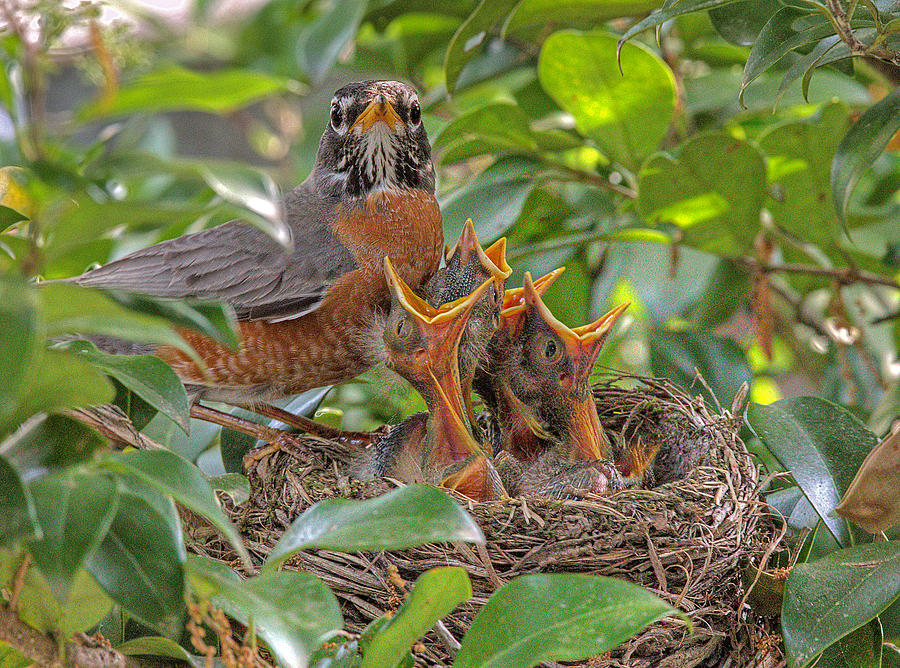 The second nest was always built at a considerable distance from the first, and habitats for other pairs of robins were often located between them. Since the second females started building nests later than the rest, the scientists concluded that the best places were already occupied by that time. It should be noted that the first females managed to breed two offspring during the season, while the second ones were able to feed only one brood. As for the care of the chicks on the part of the males, their priority was the broods of the first females. They fed the offspring from the second partners much less often. The scientists also noted that in the second clutch of the first females there was an average of 1 egg less than in monogamous couples. In addition, the eggs were laid two weeks later than in normal pairs. Usually the second clutch appears in the nest even before the departure of the first chicks from the brood. nine0003
The second nest was always built at a considerable distance from the first, and habitats for other pairs of robins were often located between them. Since the second females started building nests later than the rest, the scientists concluded that the best places were already occupied by that time. It should be noted that the first females managed to breed two offspring during the season, while the second ones were able to feed only one brood. As for the care of the chicks on the part of the males, their priority was the broods of the first females. They fed the offspring from the second partners much less often. The scientists also noted that in the second clutch of the first females there was an average of 1 egg less than in monogamous couples. In addition, the eggs were laid two weeks later than in normal pairs. Usually the second clutch appears in the nest even before the departure of the first chicks from the brood. nine0003
Ornithologists have made a logical conclusion that the male does not have time to properly provide food for both females and all offspring.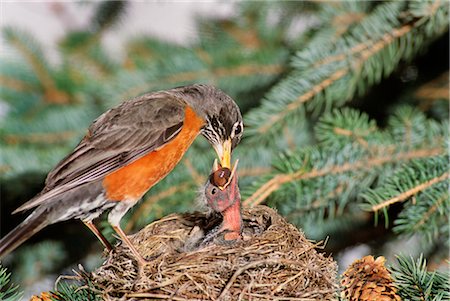 This subsequently reduces the reproductive capacity of both the first female and the second.
This subsequently reduces the reproductive capacity of both the first female and the second.
Types of robins
Consider what varieties of robins exist. They differ not only in habitat, but also in plumage color.
- Javanese - body length 17 cm, weight 20 g. Prefers to build nests near water bodies.
- Blue-blue mountain robin - a bird with bright blue plumage, lives in Asia, Indonesia, Africa. The body has a length of 17 cm, weight 19-20 g.
- Japanese - inhabits the islands of Japan, the Kuriles and Sakhalin. It has a traditional color, but the back and tail are distinguished by a rich brown tint. The length of her body is 15 cm, weight is 18 g. The male and female are not similar in plumage colors.
- Black-throated Robin - distinguished by a black spot in front and red plumage on the back and tail. Lives in forest areas. nine0010
- The white-tailed mountain robin is a bird with rich blue plumage and white tail feathers. Lives in the Caucasus and Siberia.

Traditions and legends about the robin
Ancient Celts and Germans associated robins with their gods. The bird was considered the messenger of the Sun, and later the messenger of the storm and thunder god Thor. If a robin made a nest, it was considered a good sign. The destruction of robin nests was a great sin and severely punished. nine0003
Over time, robins have become very popular. They were bred as pets by wealthy Europeans and Egyptians. In the 19th century, stamps and postcards depicting the robin became widespread in Europe. At the same time, a legend appeared that the birds tried to save Jesus Christ and extract the thorny thorn from his body. Therefore, on the front of the head and chest, they left a scarlet speck, symbolizing the blood of Christ.
The robin is often mentioned in the works of famous writers and poets, for example, in the lullaby of the Isle of Man "Ushag veg ruy", the novel "Redneck" by Y.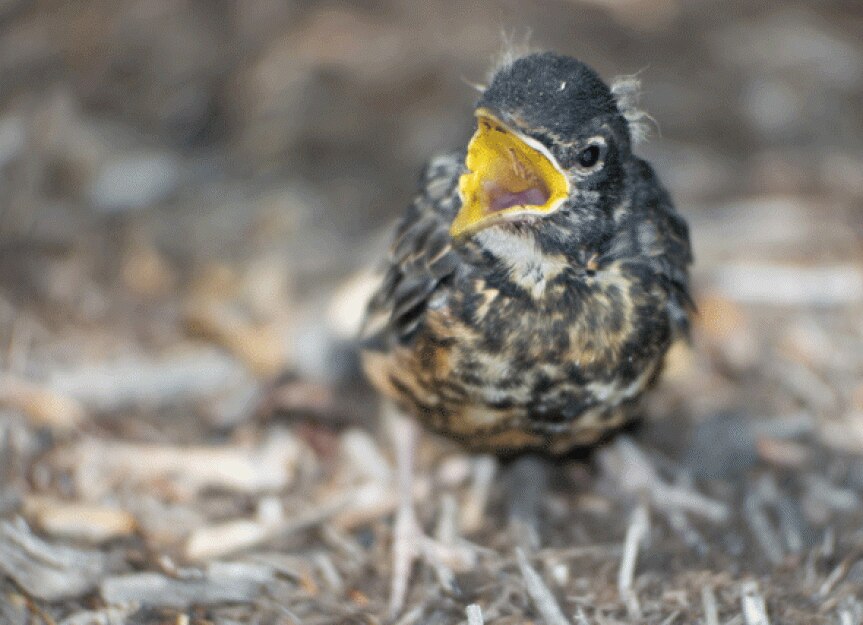 Nesbo. There is a whole cycle of paintings about the robin and fabulous creatures by the artist John Anster Fitzgerald. The most famous song about the robin in Russia is the work of VIA "Verasy" "Robins having heard a voice ...". nine0003
Nesbo. There is a whole cycle of paintings about the robin and fabulous creatures by the artist John Anster Fitzgerald. The most famous song about the robin in Russia is the work of VIA "Verasy" "Robins having heard a voice ...". nine0003
Keeping the robin at home
Due to its beautiful voice, the robin is often chosen for keeping at home. This bird is unpretentious to food and quickly gets used to the person. The robin will feel quite comfortable in a medium-sized cage made of wood or metal. In order for the bird to please with singing more often, you need to put the cage in a well-lit place, but direct sunlight or drafts should not constantly fall on it. In the warm season, you can keep robins on the balcony. The cage should have several perches, containers for food, drink and bathing. Robins are very fond of taking baths, so the water in the bath will often have to be changed. It would be advisable to pour river sand on the floor of the cage, which the birds will use for proper digestion. Cleaning in the cage should be done every day, and complete disinfection once every 7-10 days. nine0003 Well-fed robin near the feeder
Cleaning in the cage should be done every day, and complete disinfection once every 7-10 days. nine0003 Well-fed robin near the feeder
In captivity, the robin is fed:
- mealworms;
- grated carrots;
- hemp seeds;
- porridge;
- ant eggs.
It is enough to give an adult bird 6-8 worms per day. In autumn and winter, it is useful to feed robins with berries.
Robins do not coexist well with other bird species and do not get along in a large group. It is best if you get a couple of robins. If you organize a nest for them, they can lay eggs and breed. An ordinary small box with a hole is suitable for this. It is desirable that it be made of wood and have a sufficiently large entrance not less than 6 cm in diameter. nine0003
INTERESTING FACT. Robins are excellent parents and can even feed other people's chicks, in nature this is used by cuckoos.
How to catch a robin
Bird markets or pet stores sell robins very rarely. To get yourself this bird, you can catch it with a special trap with a slamming door. It is necessary to find a place where robins live, set 2-3 traps with worms or mountain ash and wait for the bird to get there. Robins are very trusting and are not afraid of humans. Noticing the food, the bird will jump on the door and fall into the trap. nine0003
To get yourself this bird, you can catch it with a special trap with a slamming door. It is necessary to find a place where robins live, set 2-3 traps with worms or mountain ash and wait for the bird to get there. Robins are very trusting and are not afraid of humans. Noticing the food, the bird will jump on the door and fall into the trap. nine0003
Despite high mortality and a large number of enemies, the number of robins remains stable and nothing threatens the species. Active breeding 2-3 times a year and breeding in captivity allow you to save their population. It has about 200 thousand individuals, most of which live in Europe. However, people should think about preserving the habitat of these sociable birds, so as not to put the species on the brink of extinction.
Malinovka - Notes of a Naturalist | Non-commercial educational and cognitive Internet portal Zoogalaxy
The Animal Friend series, 1909
6012 A close relative of the nightingale, the robin, a very pretty and lovely bird, a little graceful, with a pretty head, big beautiful eyes and a thin beak; her back is greenish-gray, her abdomen is gray, and her throat, forehead and breast are yellowish-red; the legs of the robin are thin, slender, high; the tail is long and very mobile. And what a lively, dexterous and cheerful she is! Every now and then she jumps with a cheerful chirping from branch to branch, deftly making her way through the densest bushes, so she jumped to the ground and fluttered along it quickly, quickly ... flutter! - and has already gone upstairs. The robin flies very well, quickly, tirelessly. nine0003
And what a lively, dexterous and cheerful she is! Every now and then she jumps with a cheerful chirping from branch to branch, deftly making her way through the densest bushes, so she jumped to the ground and fluttered along it quickly, quickly ... flutter! - and has already gone upstairs. The robin flies very well, quickly, tirelessly. nine0003
Robin - a very common bird; it is found in almost every forest where bushes grow under large trees; she lives on the mountains, and in the plains, and in the fields, and in the gardens, and often settles in the vicinity of human habitation. The robin is found, except for the extreme north, throughout Europe - in the summer in the north, and in the winter it flies to the south.
She flies to us in early spring, when our alder earrings are just beginning to bloom, but at first the poor thing often has a hard time: it’s cold, and, most importantly, hungry. The robin, like the nightingale, is an insectivorous bird, so it is difficult for her to provide food for herself at first; all day long, in great trouble, she darts through the surrounding forests, gardens and bushes in pursuit of food, and chirps loudly. nine0003
nine0003
But here comes the real spring. The air gets warmer, many insects appear, and the robin starts its real song. If you go in the direction of this song, you can see the singer himself: at the end of one of the high branches of a large tree, a small, pretty, red-breasted bird sits and, proudly raising its head, lowering its wings and inflating its stomach, sings - pours a silver song. And her song is good - you will hear it! Thus sings the robin from dawn until nightfall all spring; in the summer, her marvelous songs are silent, but in the morning she is the first to greet the morning dawn with a song, the last to see off the sun at sunset, which is why the robin is also called the “robin”. nine0003
Each pair of robins has its own area in the forest, where they arrange their nest; they arrange it on the ground, in a hole, in thick grass, in moss, or even in an empty mink of some animal, or not high above the ground, on a rotten stump, between the roots of a tree. If the hole in which the robins decide to build their nest is too large, then they fill it with dry leaves, and the walls of the nest are woven from moss, dry twigs and leaves.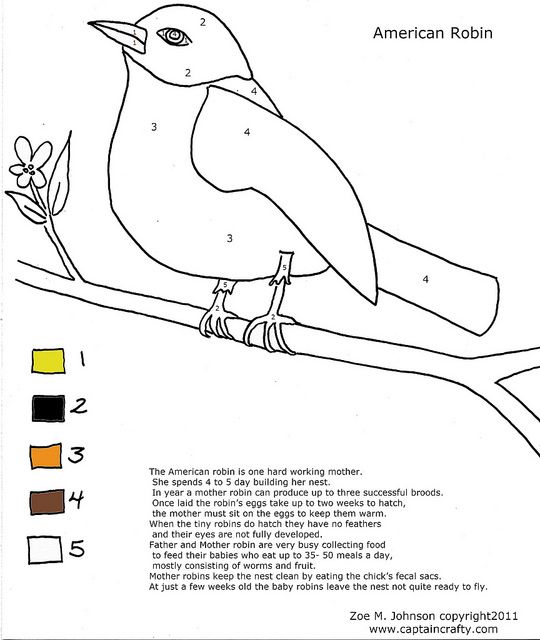 Inside, they softly line it with thin roots, straw, hair, wool and feathers. If the hole in which the nest is built is too open, the birds arrange a canopy over the nest so that the rain does not wet it, and the inlet is made on the side. nine0003
Inside, they softly line it with thin roots, straw, hair, wool and feathers. If the hole in which the nest is built is too open, the birds arrange a canopy over the nest so that the rain does not wet it, and the inlet is made on the side. nine0003
At the end of April or at the beginning of May, 5-7 motley eggs can be seen in such a nest. Mother and father sit on them alternately: the mother sits during the day, and the father at night. When the chicks hatch from the eggs, the mother and father feed them so diligently that the chicks grow and get stronger very quickly. And after the chicks fly out of the nest, the mother and father for 8 days, or even more, still fly with them and feed them until they learn how to fly well and get their own food. And there the children will scatter in different directions, and the old people again begin to bring out the second chicks. nine0003
In July or early August, when the second brood of chicks has fledged and scattered, the old robins molt and, when they molt, begin to prepare for departure. If, during their departure, you come close to the place of their gathering in the forest, then from every tree, from every bush their voices are heard. At first they are heard close, close to the ground, then higher and higher, and finally their voices are heard from the tops of the trees, then everything is silent ... And when the sun sets, their chirping is already heard high, high above the forest: they are flying to the winter hut. nine0003
If, during their departure, you come close to the place of their gathering in the forest, then from every tree, from every bush their voices are heard. At first they are heard close, close to the ground, then higher and higher, and finally their voices are heard from the tops of the trees, then everything is silent ... And when the sun sets, their chirping is already heard high, high above the forest: they are flying to the winter hut. nine0003
Most of the robins do not fly far from us for the winter, they fly only from the north to southern Europe, and when their cheerful, ringing songs subside in our country and the forest is empty, those places where these birds spend the winter come to life. Where in the summer you would look in vain for a robin, they suddenly appear on every bush, on every hedge and tree, and chirp loudly in front of each other.
In some places where the winter is not so severe, many robins do not fly away for the winter at all, but, having got closer to human habitation, they feed here, near a person, paying him for dinner with ringing chirps. nine0003
nine0003
The robin's disposition is lively, cheerful, but also perky, she often teases other birds, starts quarrels with them, even fights, but she has a good heart - she pities her sick comrades, helps them.
Two robins lived in the same cage and constantly did not get along with each other, argued over every grain, fought. But one of the robins broke her leg and became very ill. Immediately, the healthy woman began to take care of the sick, she brought her food, rejoiced when she pecked him and in every possible way showed how sorry she was for the sick comrade. And when the sick robin recovered, there was no mention of the previous quarrels, and both robins began to live together in harmony. nine0003
And then another person had a robin in the house; she was very tame; her cage was never locked, and she flew freely through all the rooms. Once the owner of a robin found a little linnet chick and brought it home. A hungry chick squeaks loudly, asks for food, opens its mouth wide.